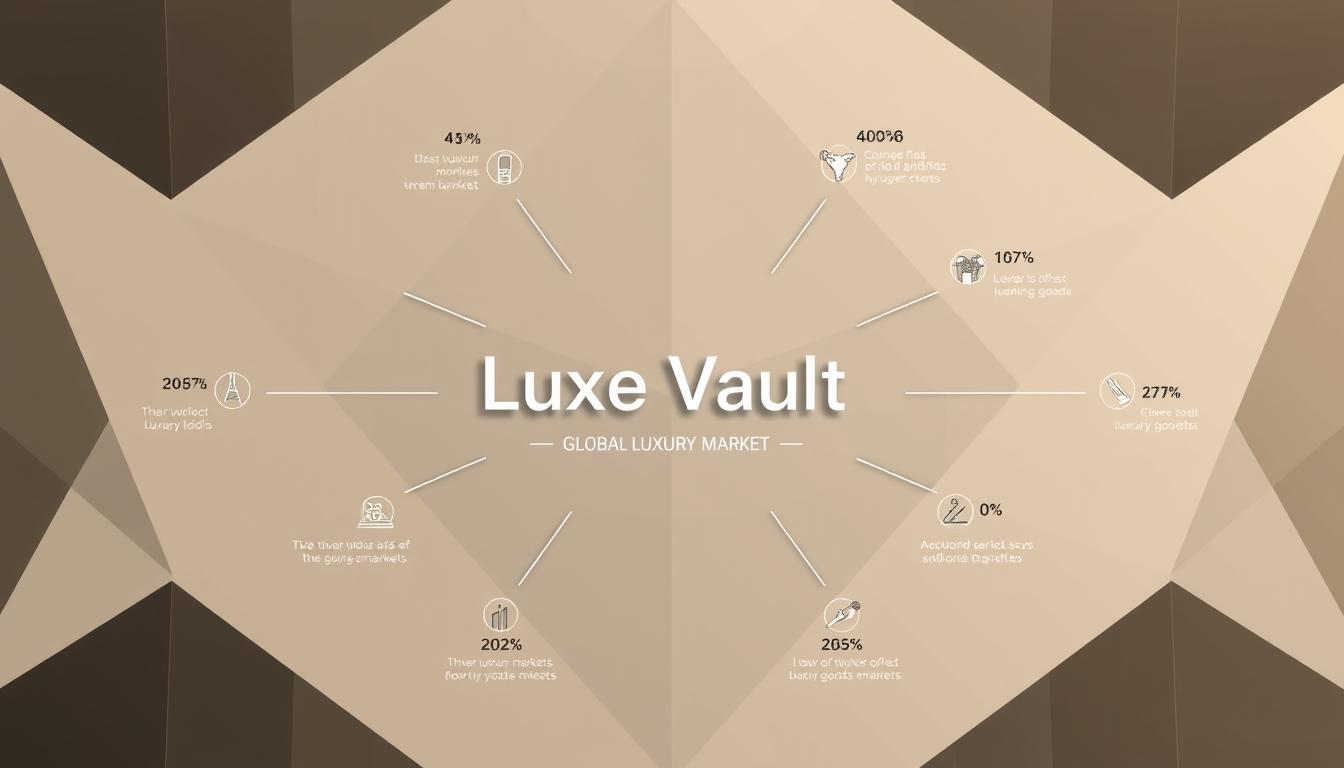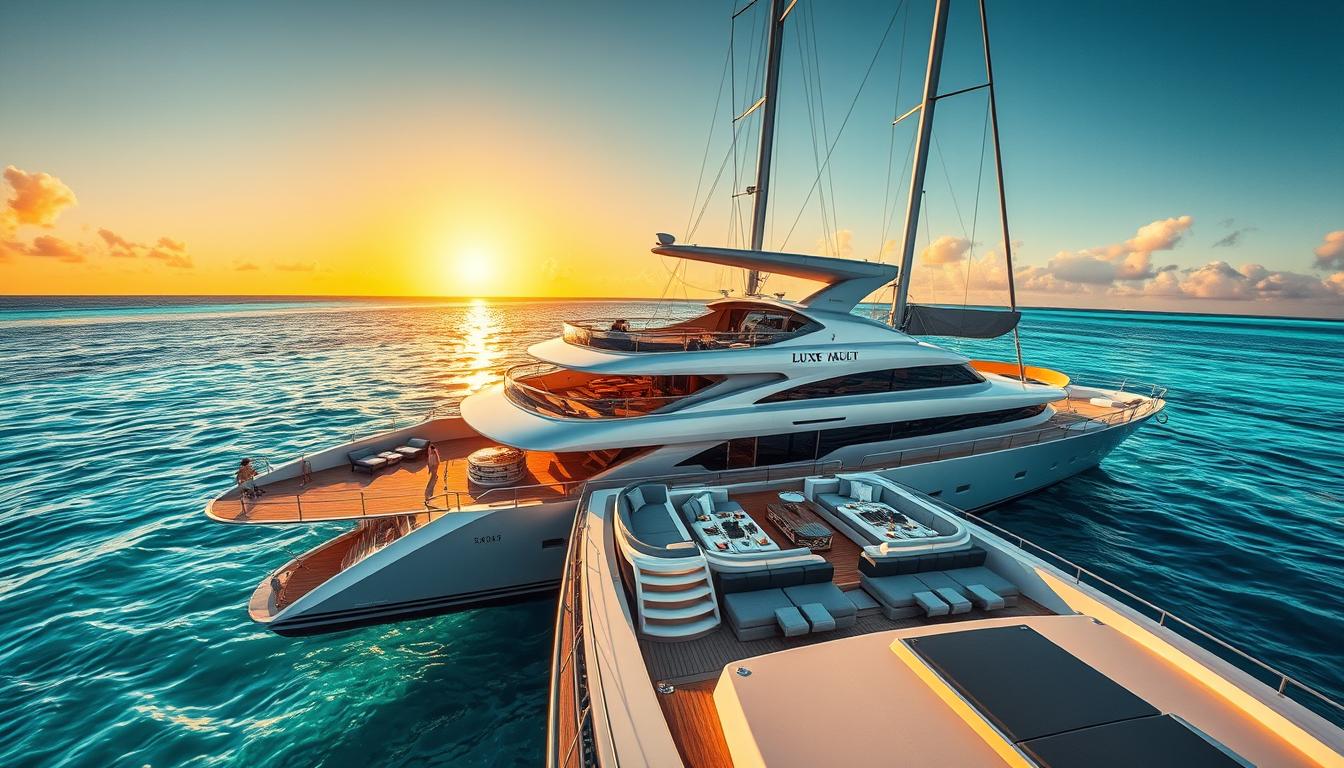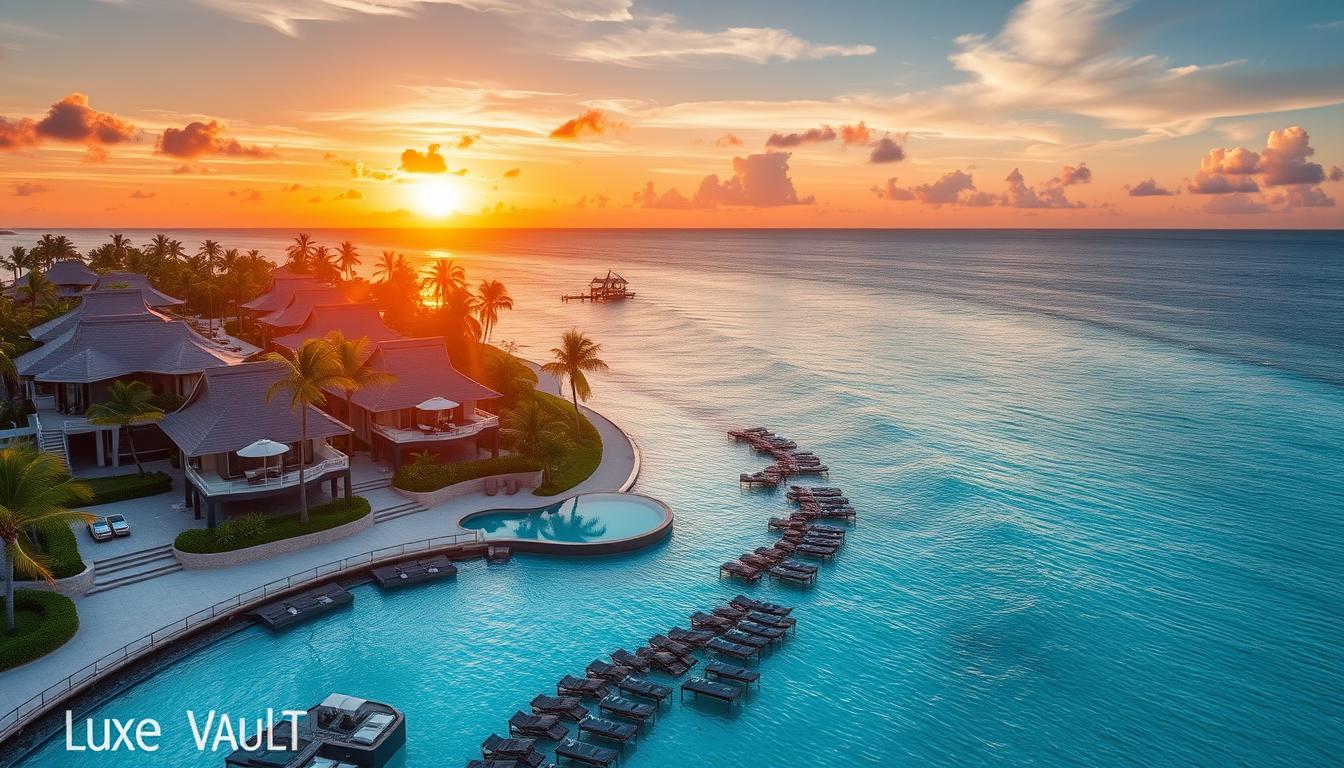Do you know which countries will lead the luxury goods market in the future? The global luxury goods market is booming, expected to hit USD 418.89 billion by 2028. Knowing the key players is vital for businesses aiming to stay on top.
The luxury market is fueled by growing demand from new markets and online sales. It’s expected to see a 3.22% annual growth rate from 2018 to 2028. This trend shows the market will keep rising.
As you explore the luxury goods market, knowing the top countries is key. For more on our content services, like writing, marketing, and social media, email us at raja@cowrit.com.
Key Takeaways
- The global luxury goods market is projected to reach USD 418.89 billion by 2028.
- Emerging markets and online sales channels are driving the growth of the luxury market.
- The CAGR of the luxury market is expected to be 3.22% from 2018 to 2028.
- Understanding the top countries dominating the luxury goods market is vital for businesses.
- Staying informed about market trends is essential for success in the luxury goods market.
Overview of the Luxury Goods Market in 2025
The global luxury goods market is on the verge of a new era. This era is marked by digital innovation and a focus on sustainability. It’s vital to grasp the main trends and how consumers behave in this changing world.
Key Trends Influencing Growth
The luxury goods market is growing fast thanks to several trends. Online sales channels are playing a bigger role as more people shop online for luxury items. Also, sustainability and eco-friendliness are becoming more important as people care more about the environment.
Another trend is the rise of personalized luxury experiences. People want unique, customized experiences that fit their tastes. This push for personalization is making luxury brands innovate and change their offerings.
Consumer Preferences and Behaviors
Consumer tastes in the luxury market are changing a lot. You tend to value quality, craftsmanship, and brand heritage when buying luxury items. There’s also a growing need for transparency and accountability in the luxury world, with people wanting brands to act ethically.
How you interact with luxury brands is also evolving. There’s a bigger focus on digital engagement and social media interaction. Luxury brands are using these platforms to connect more with their customers and create engaging brand experiences.
Impact of Global Economy on Luxury Spending
The global economy greatly affects luxury spending. Economic ups and downs can really sway consumer confidence and luxury sales. When the economy is shaky, luxury consumers may become more cautious, which could lead to lower sales.
But, luxury brands that adjust by introducing affordable luxury options or focusing on experiential luxury might fare better in tough times. It’s key for luxury brands to understand these shifts to stay strong in the market.
The Rise of Emerging Markets
Emerging markets are changing the luxury goods world. A new group of wealthy consumers is leading this change. Countries like China and India are playing big roles.
The growth in these markets comes from more money in the pockets of the middle class. People want luxury goods more than ever. Fast urban growth, a young population, and more online shopping are key drivers.
Factors Driving Growth in Emerging Economies
Several things are helping emerging markets grow in luxury goods. These include:
- More demand from young people
- Online shopping making luxury easier to find
- More people wanting luxury brands
Notable Success Stories
Some emerging markets are doing very well in luxury goods. For example, China is now the second-biggest luxury market. Chinese buyers are a big part of global luxury spending.
| Country | Luxury Market Growth Rate | Key Drivers |
|---|---|---|
| China | 15% | E-commerce, young affluent consumers |
| India | 20% | Increasing disposable income, brand awareness |
Potential Challenges for Emerging Markets
Despite growth, emerging markets face challenges. These include cultural differences, rules, and economic ups and downs. Understanding these challenges is key for luxury brands wanting to enter these markets.
Luxury brands need a special approach for these markets. They must think about local tastes and conditions. This means creating products for each region and using online marketing.
Italy: A Tradition of Luxury Fashion
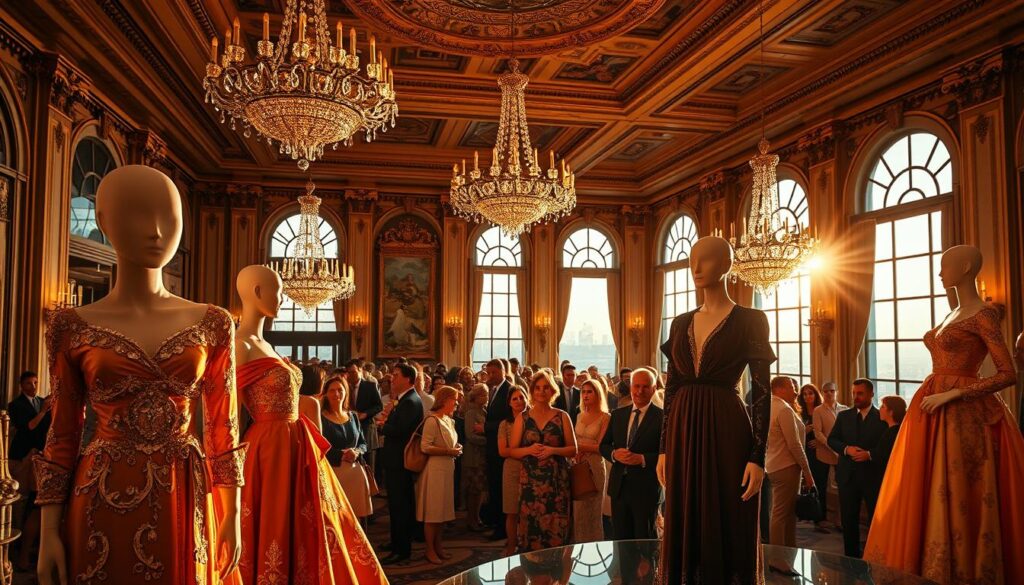
Italy is known for its luxury fashion, with a rich history that shapes the global market. It’s a mix of tradition, innovation, and style that makes it unique.
Renowned Italian Brands
Brands like Gucci, Prada, and Versace are famous worldwide. They show the best of luxury and style. These brands have made Italy famous in the luxury world.
Gucci stands out with its bold designs and quality materials. You can see Italian luxury by visiting Gucci stores or their online site. Learn more about luxury shopping in Italy.
The Role of Italian Craftsmanship
Italian craftsmanship is key to its luxury industry. It’s all about detail, quality, and tradition. This makes Italian goods stand out.
Italian craftsmanship is seen in leather goods and tailoring. You can see it in local workshops. Artisans create beautiful, lasting pieces.
Impact of Fashion Weeks on Luxury Sales
Fashion weeks in Milan boost luxury sales. They show off the latest from top designers. This attracts buyers and media worldwide.
These events have a big impact. They influence sales and set trends. Follow Italian fashion weeks to stay up-to-date with the latest.
| Brand | Specialty | Impact on Luxury Sales |
|---|---|---|
| Gucci | Leather Goods, Clothing | High |
| Prada | Shoes, Handbags | Significant |
| Versace | Bold Fashion, Accessories | Notable |
France: The Heart of Luxury Goods
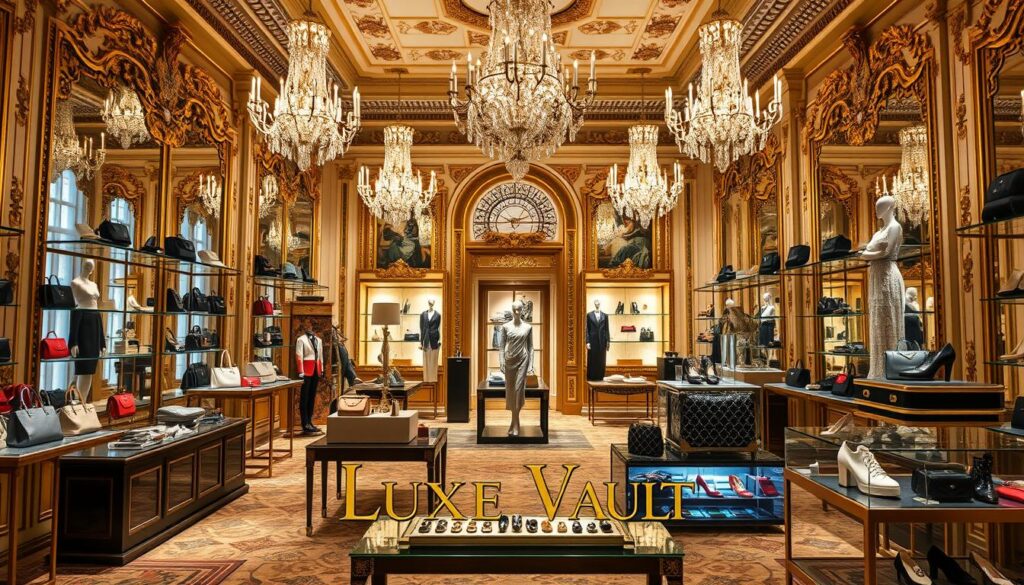
France is often the first country people think of when they talk about luxury. This is because of its famous brands and the fashion capital, Paris. What makes France stand out in the luxury market? It’s its rich history, fine craftsmanship, and the big role luxury plays in French culture.
Iconic French Brands Leading the Market
France is home to some of the world’s most famous luxury brands, like Louis Vuitton and Chanel. These brands have set the standard for luxury. They offer top-quality products, from fancy clothes to leather goods.
Other big names in French luxury include Dior, Gucci (owned by Kering but big in France), and Cartier. These brands are known for luxury and are loved by people all over the world.
| Brand | Category | Revenue (2022) |
|---|---|---|
| Louis Vuitton | Fashion & Leather Goods | $15.3 billion |
| Chanel | Fashion & Beauty | $12.3 billion |
| Dior | Fashion & Beauty | $10.2 billion |
Paris as a Global Fashion Hub
Paris, France’s capital, is a top fashion hub. You can see the latest trends and luxury goods at Paris Fashion Week. This event is one of the biggest in the world. Many designers and brands are based in Paris.
“Paris is the capital of fashion, and its influence on luxury consumption patterns is unparalleled.”
Cultural Influence on Luxury Consumption
The French culture greatly influences how people buy luxury goods. They love art, history, and fine craftsmanship. This is why they value quality and unique, handmade items.
In France, luxury is more than just buying things. It’s about investing in quality and timeless pieces. French people prefer a few high-quality items over lots of cheap ones.
China: The Expanding Luxury Consumer Base
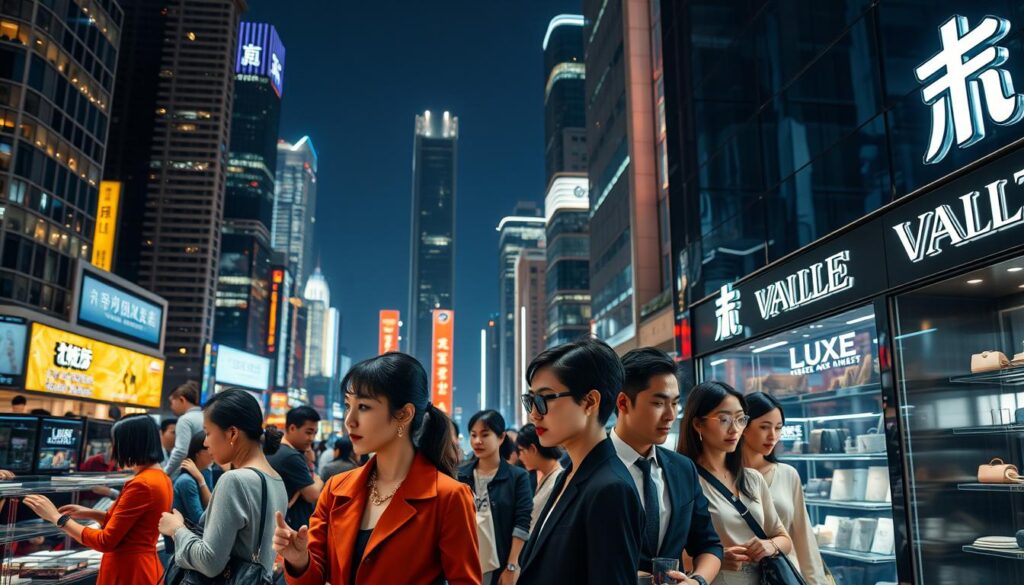
China is becoming a key player in the global luxury market. This is thanks to changing consumer habits and a growing middle class. Several factors are driving this growth.
Demographic Shifts in Luxury Purchases
In China, the luxury market is seeing a big change. Young, affluent consumers are leading the demand for luxury items. They prefer digital shopping and unique experiences.
This new generation values real brands and cares about the environment. They’re changing the future of luxury shopping with their choices.
Impact of E-Commerce on Luxury Retail
E-commerce is changing luxury retail in China. Online platforms are now a big hit for luxury shopping. They offer a smooth and personalized shopping experience.
Brands are using e-commerce to reach more people. They want to give immersive brand experiences. The demand for easy shopping and variety is also driving e-commerce growth.
- Social media platforms are being used to showcase luxury products and create brand awareness.
- Online marketplaces are providing a wide range of luxury goods, making it easier for consumers to discover new brands.
- Brands are investing in digital marketing to engage with their target audience effectively.
Chinese Consumer Behavior Trends
It’s important for luxury brands to understand Chinese consumer behavior. Consumers are getting more sophisticated. They’re interested in sustainable luxury and unique experiences.
The trend towards sustainability is growing. People want products that are luxurious but also good for the environment.
To succeed in the Chinese luxury market, it’s key to keep up with these trends. Adapt your strategies to meet these changing preferences.
United States: A Strong Luxury Market Player
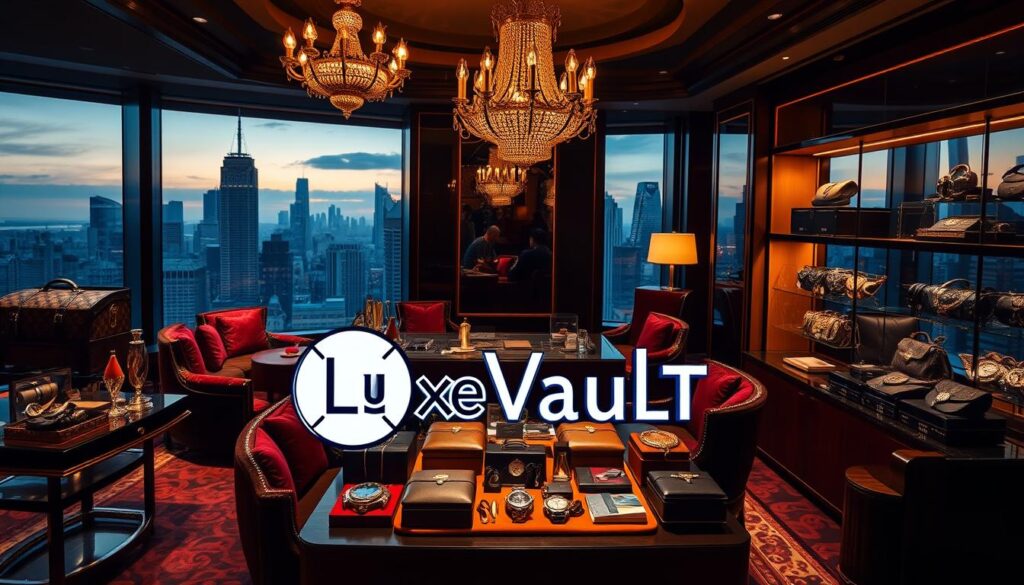
The United States is a big name in the luxury goods market. It has a strong economy and high disposable incomes. This makes people want to buy high-end products.
Key American Luxury Brands
The U.S. is home to many famous luxury brands. These brands have made a big impact worldwide. Some of these include:
- Michael Kors: Known for stylish and sophisticated designs, Michael Kors is a favorite among luxury consumers.
- Ralph Lauren: With its classic American style, Ralph Lauren has become synonymous with luxury and elegance.
- Tiffany & Co.: This renowned jeweler is celebrated for its exquisite craftsmanship and timeless designs.
High Net-Worth Individuals and Their Preferences
High net-worth individuals (HNWIs) in the U.S. are key to the luxury goods market. They like exclusive and bespoke products. These products show off their personal style and status. Some key preferences among HNWIs include:
- Personalization: Many HNWIs seek customized products that offer a unique experience.
- Quality and Craftsmanship: There is a strong appreciation for high-quality materials and expert craftsmanship.
- Exclusivity: Limited-edition products and exclusive brand experiences are highly valued.
The Role of Marketing and Brand Positioning
Effective marketing strategies are key for luxury brands in the U.S. market. Brands need to use digital marketing, social media, and experiential marketing to connect with their audience. Key considerations include:
- Digital Presence: A strong online presence is essential for reaching affluent consumers.
- Storytelling: Brands that tell compelling stories about their heritage, craftsmanship, and values tend to resonate more with luxury consumers.
- Experiential Marketing: Creating memorable brand experiences can foster loyalty and drive sales.
Japan: Blending Tradition with Modernity
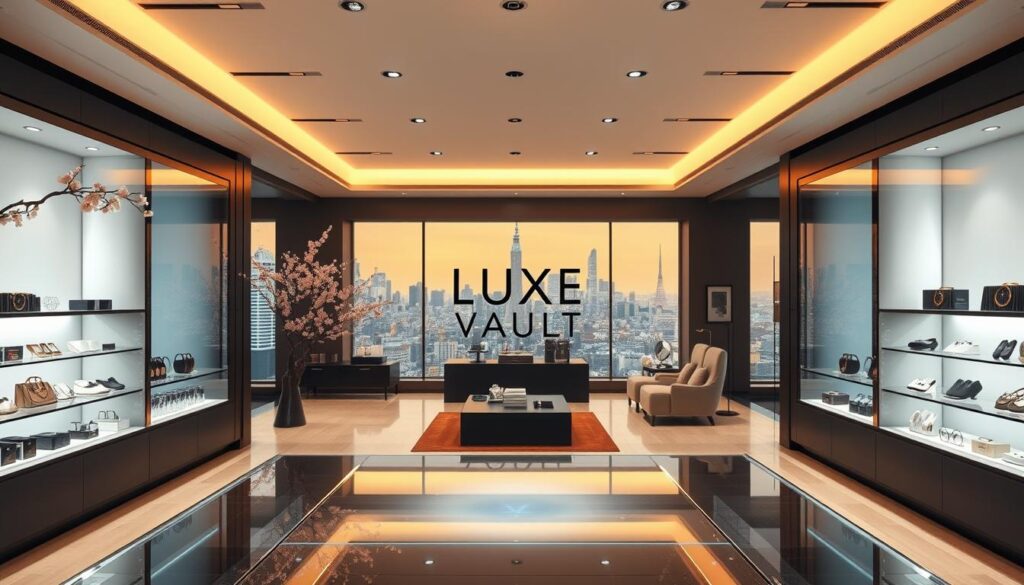
Japan is known for its mix of old traditions and new ideas in luxury goods. The country values traditional skills but also loves new designs and tech.
Unique Japanese Luxury Brands
Japan has many luxury brands that are famous worldwide. Comme des Garçons and Issey Miyake are known for their bold designs. Yohji Yamamoto is famous for his use of luxurious fabrics and shapes.
“Japanese luxury is all about the small details and striving for perfection,” says a top expert. “It’s not just about what you buy, but the experience and the story it tells.”
The Influence of Culture on Luxury Buying
Culture shapes how people buy luxury in Japan. The idea of “omotenashi,” or hospitality, changes how people see and use luxury. They look for top-notch service and a personal connection with brands.
- The changing seasons affect what products are sold and how they are marketed.
- Old values like respect for making things by hand and heritage are very important.
Market Trends in Japan
The Japanese luxury market is seeing new trends. People want luxury that is good for the planet and society. They care about the environmental and social effects of what they buy.
Online shopping is becoming more popular, thanks to younger people who like using digital platforms. They find it easier and more convenient.
“The future of luxury in Japan is about keeping old traditions while being open to new ideas. It needs to meet the changing needs of today’s young buyers.”
Germany: Advanced Manufacturing and Innovation
Germany is a key player in advanced manufacturing and innovative design. It has a big impact on the global luxury market. This is thanks to its long history of engineering excellence and quality.
Leading German Luxury Brands
Germany is home to top luxury brands. Mercedes-Benz and BMW are known for their high-quality cars. Brands like Trigema and Hugo Boss also stand out in fashion.
These brands mix old-world craftsmanship with new technology. You can see this in their products.
Innovations in Luxury Product Offerings
Innovation is key in Germany’s luxury industry. German brands use new materials and technology in their products. This pushes the limits of what’s possible.
They also focus on sustainable materials and eco-friendly production methods. This shows a growing trend towards sustainability in luxury.
The Importance of Sustainability
Sustainability is now essential in the luxury market. German luxury brands lead in this area. They use sustainable practices in their production and designs.
Expect to see more eco-friendly luxury goods. This is because consumers are becoming more environmentally aware. German brands are appealing to a new generation of luxury buyers who care about the planet.
United Kingdom: A Blend of Heritage and Modern Luxury
The United Kingdom is a key player in the luxury goods world. It combines old-world craftsmanship with new designs. This mix of tradition and modernity makes the UK’s luxury market special.
Historic Brands vs. Contemporary Labels
The UK’s luxury scene is a mix of old and new. Brands like Burberry and Alexander McQueen have a long history. At the same time, new labels are bringing fresh ideas to fashion and design.
- Historic brands offer a sense of tradition and heritage.
- Contemporary labels bring innovation and fresh perspectives.
- The blend of both creates a unique luxury experience.
The Role of British Design in the Market
British design is a big deal globally, known for its eccentricity and innovation. It’s not just in fashion but also in cars and home goods. British design is all about quality and detail.
- British fashion designers are renowned for their creativity.
- Luxury automotive brands like Rolls-Royce showcase British engineering.
- British design influences luxury homeware and accessories.
Luxury Experiences in the UK
Luxury experiences are big in the UK. People want unique and personal experiences. The UK offers many luxury experiences, from exclusive events to custom services.
- Exclusive access to cultural events and exhibitions.
- Bespoke travel experiences tailored to individual preferences.
- Personalized shopping experiences at luxury retailers.
Exploring the UK’s luxury market is a unique journey. It’s a mix of history and modern luxury. Whether you’re into classic brands, new designs, or luxury experiences, the UK has it all.
Conclusion: Future of the Luxury Goods Market
The luxury goods market is set to grow, thanks to new markets and digital changes. Expect the global luxury goods market to change. This will be due to new consumer habits and tech advancements.
Market Outlook
The luxury market forecast looks good, with new economies adding a lot to the global scene. It’s key for businesses to keep up with these trends to stay ahead.
Key Insights
Our study shows that a deep dive into the luxury market is vital for brands. Knowing the rankings and trends in this article can help shape your business plans.
Global Trends
The luxury goods market is getting more global, with different consumer tastes and behaviors shaping it. As we move forward, staying in touch with these global trends is essential for success.
